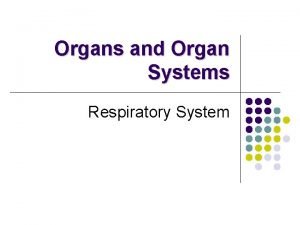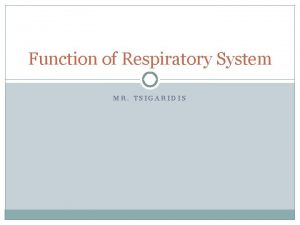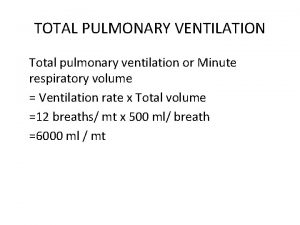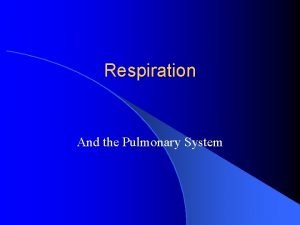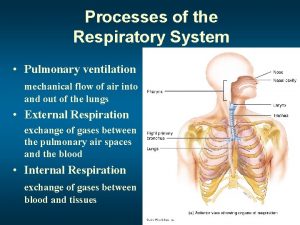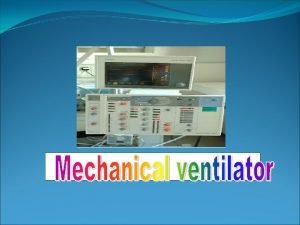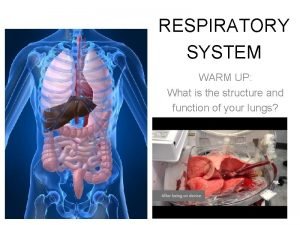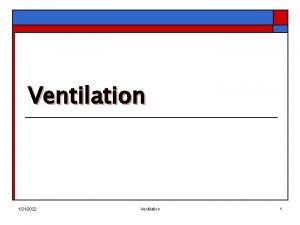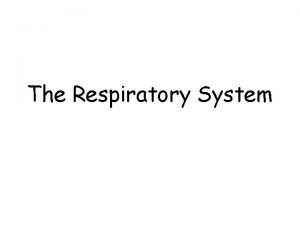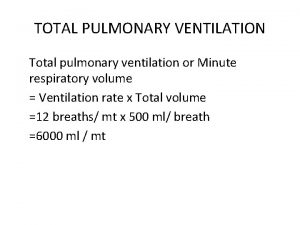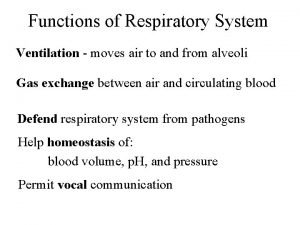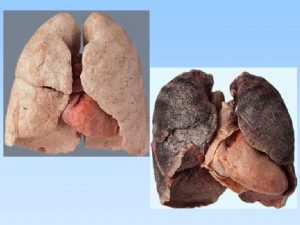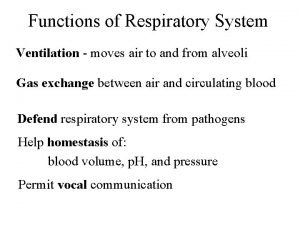Overview of respiratory system Pulmonary ventilation Air moves








- Slides: 8

Overview of respiratory system

Pulmonary ventilation § Air moves in and out of lungs § Continuous replacement of gases in alveoli (air sacs) External respiration § Gas exchange between blood and air at alveoli § O 2 (oxygen) in air diffuses into blood § CO 2 (carbon dioxide) in blood diffuses into alveoli Internal respiration § Gas exchange in capillaries between blood and tissue cells § O 2 in blood diffuses into tissues § CO 2 waste in tissues diffuses into blood Cellular respiration § § Oxygen (O 2) is used by the cells O 2 needed in conversion of glucose to cellular energy (ATP) Carbon dioxide (CO 2) is produced as a waste product The body’s cells die if either the respiratory or cardiovascular system fails

Overview of respiratory system Conducting zone Respiratory passages that carry air to the site of gas exchange Filters, humidifies and warms air Respiratory zone Site of gas exchange Composed of • Respiratory bronchioles • Alveolar ducts • Alveolar sacs

FACTS OF VENTILATION q. Swiss anatomist dr. weibel counted the air ways in the lung and measures their sizes and he came up with idealized airway model called weibel model



§ § Alveoli surrounded by fine elastic fibers Alveolar macrophages – free floating “dust cells” Note type I and type II cells and joint membrane Type 4 collagen responsible for the strength of basement membrane §air-blood barrier (the respiratory membrane) is where gas exchange occurs Oxygen diffuses from air in alveolus (singular of alveoli) to blood in capillary. Carbon dioxide diffuses from the blood in the capillary into the air in the alveolus

Ficks law of diffusion through a tissue sheet q if you have a tissue sheet like a postage stamp then the volume of gas which moves a cross the sheet is proportional to the area of the sheet and proportional to the constant which is called the diffusion constant and the difference of partial pressure between one side of the sheet and the other q. Inversely proportional to the thickness of sheet q. So we need thin sheet as possible and large area as possible The blood gas barrier is phenomenally thin and the area is about 50 to 100 square meters enormous area that is generated by 500 million alveoli and in each walls of the alveoli you get these capillaries with their blood gas barrier
